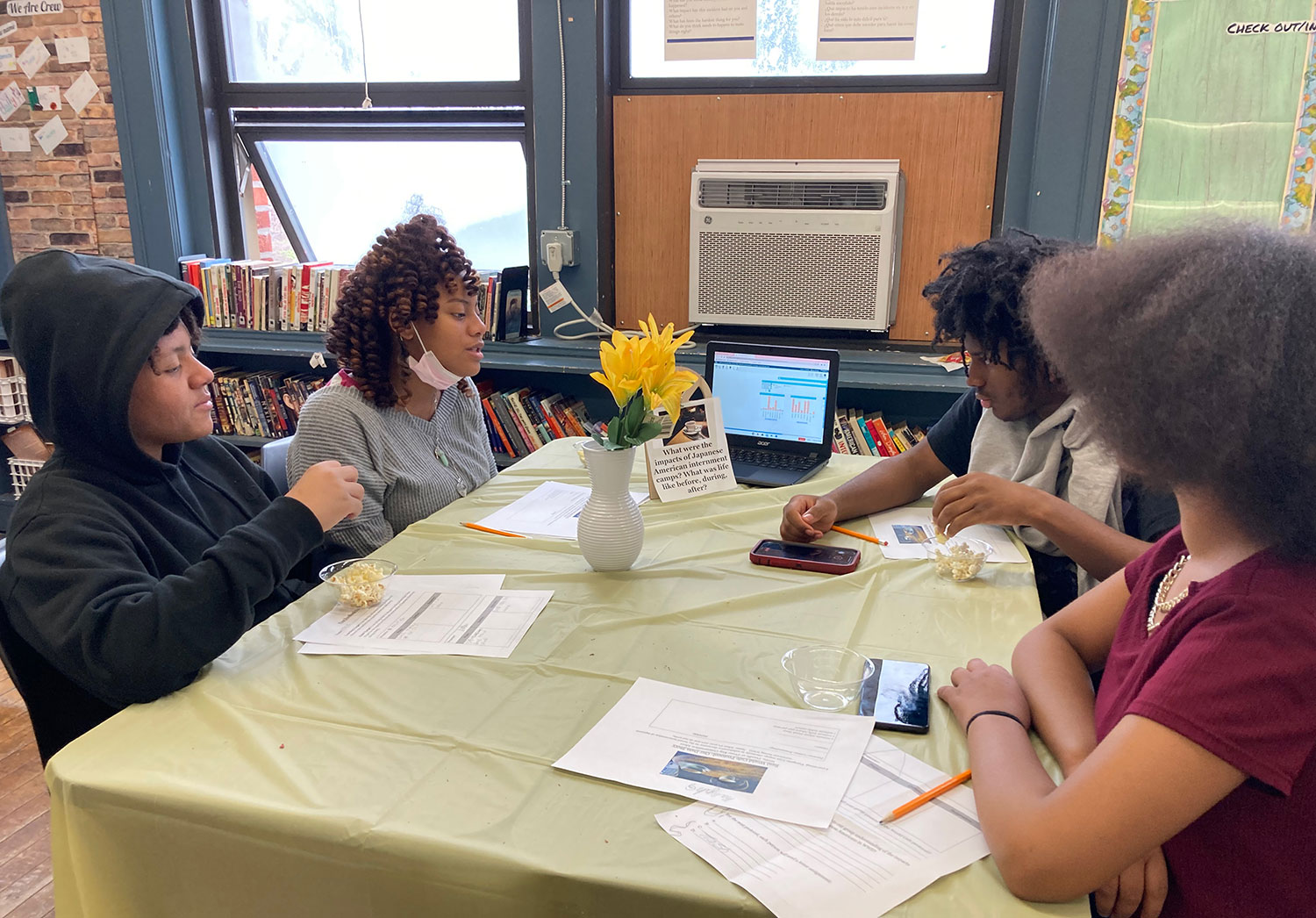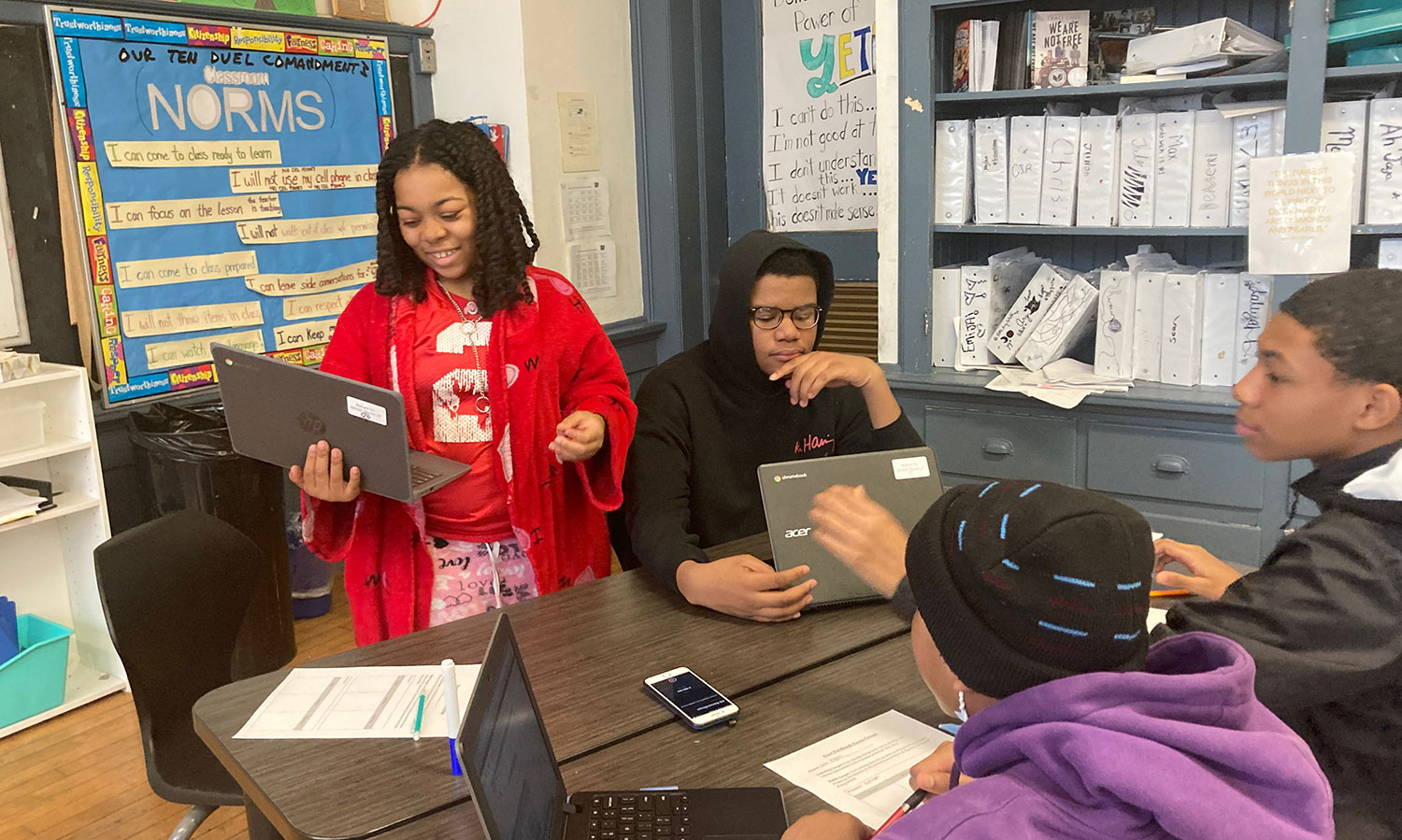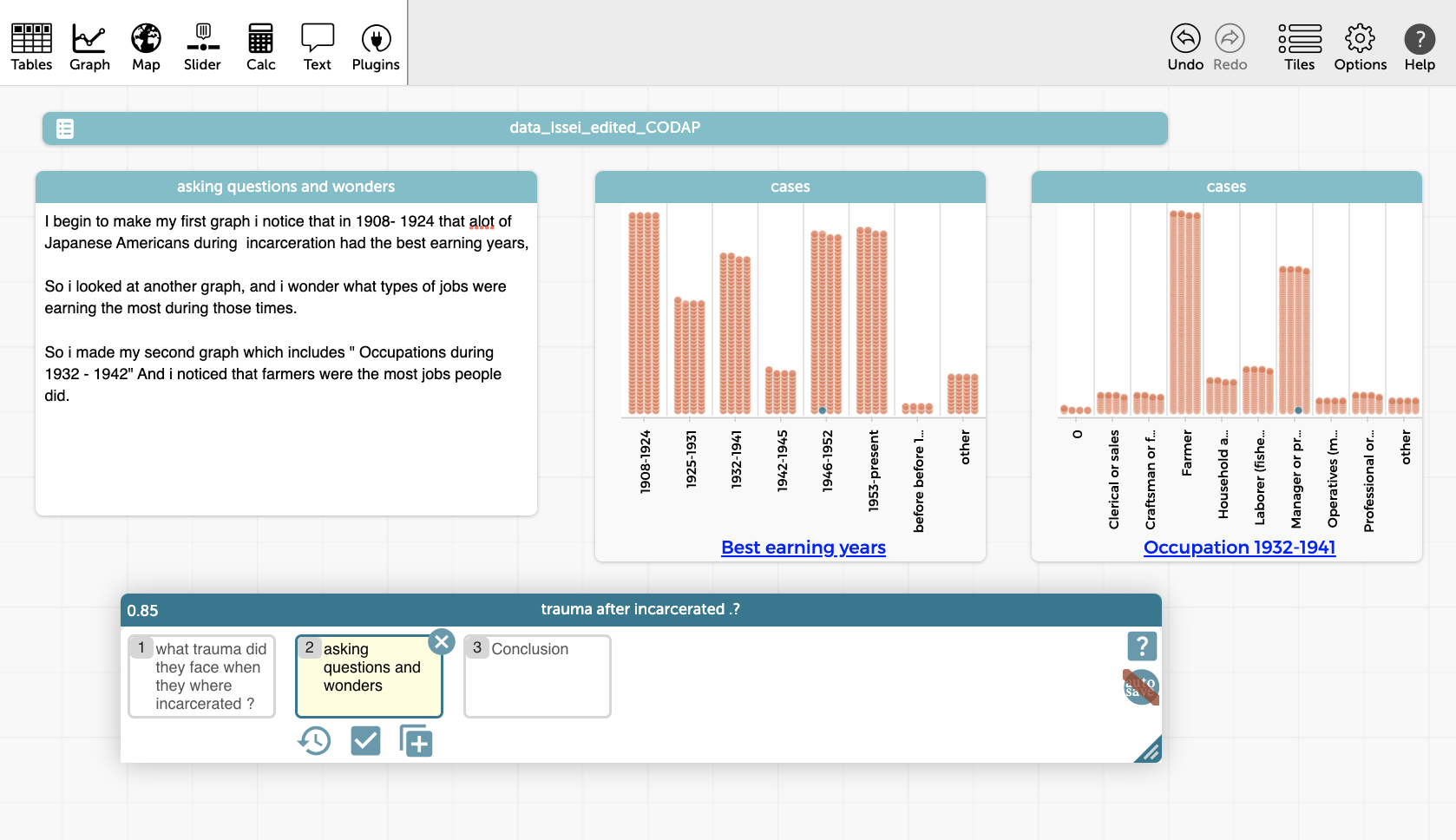Google “Japanese Internment data” and you’ll find thousands of links. There are sites dedicated to Japanese culture, ancestry, and history, plus government records, university departments, museums, and public television stations with scores of information. There are even sites devoted to finding other sites with links to data.
I recently found myself, like Edgar Allan Poe, “pondering weak and weary over this curious volume of lore,” in search of datasets that could be used to further student understanding of the plight of Japanese American internees during World War II.
It’s an odd thing for a former high school biology teacher to be working in this space, but because I am now a curriculum developer at the Concord Consortium on a project looking to bridge English language arts and mathematics through the use of data, I find myself carrying out this uncharacteristic online search. Together with project partners at EL Education, researchers at the University of Colorado Boulder, and public middle school teachers and administrators in Columbus, Ohio, and New York City, we are working to bring data science into 8th grade ELA classrooms. One interdisciplinary module is focused on the Japanese American internment during World War II.

The first days in the classroom were exciting. Students had begun reading A Farewell to Manzanar, the memoir of an internee who spent her middle and high school years living at the camp. The 8th graders were fascinated by her story and their questions began to fly.
Did people die in the camps? Did any of them try to escape and run away? It must have been hard—how did the Japanese feel? How many kids were born in the camps? How many were able to live a stable life afterward? Did anyone suffer from PTSD? What happened after they left the camps. What was the impact on their families and lives?
With these and other questions from the students and teachers, I began my search for data that might contain some answers.

Initial online searches turned up data sources from the War Relocation Authority (WRA), the agency established to set up and run internment camps during the war, and the Final Accountability Roster (FAR), a listing of who left the camps and the city and state to which they were headed. Though useful, these data were primarily demographic, and did not adequately address the students’ interest in what happened after internment. To get at those questions I would have to find some source of information about the internees after the war.
In one search I came across Dr. Martin Saavedra, an economics professor at Oberlin College. He is interested in the impact of early childhood environments on life expectancy and wrote a paper looking specifically at children from the Japanese American internment camps. This seemed promising—he would have needed data about the conditions of internee lives beyond internment to pen such a paper.
So I wrote to Dr. Saavedra, briefly describing our project and asking for help obtaining data about the fate of the internees. Within a few days, I received a detailed response. Dr. Saavedra shared ideas about where to look for data about the consequences of the internment of Japanese Americans. He apologized that the data he had used was protected and, therefore, could not be shared, but he referenced a paper that had used data from interviews with survivors of the internment camps along with their children and grandchildren. Those data, he noted, were available as “replication files” at a public site on the internet. (Some journals require that replication files be posted so that other researchers can reuse the data without directly contacting the original author.)
Now I was getting closer. So I set off with this clue in hand.
The data were easily downloaded, but the files were huge, including detailed responses from extensive interviews with three generations of Japanese Americans. To make things more difficult, the interview answers were saved in a coded format, with a special codebook required to interpret them. While the codebook was available, the thought of organizing and filtering so much data into something usable by 8th grade students was daunting.
After considering my next move, I decided to go straight to the source.
The paper entitled “Displacement, Diversity, and Mobility Career Impacts of Japanese American Internment” was written by Dr. Jaime Arellano-Bover, an assistant professor at Tor Vergata University of Rome. When I wrote to him, I included a short description of my travails. Within hours, he responded. Dr. Arellano-Bover still had the data, and agreed to put it into a format that could be easily used in our project. I set up a time to meet him over Zoom.
Before long, all of his data files, formatted for use within CODAP were in my inbox.
Dr. Arellano-Bover took an immediate interest in the work we were doing with middle school students. Not only is it a topic close to his heart, but he also has young children and is very interested in how the subject of internment within the United States is being taught, and in particular, how data was going to be used in the project. We met over Zoom several times and became fast friends.

Student-created StoryBuilder document in CODAP using data about the Japanese American internment
As the school year ended, I sent him some examples of student work. He thanked me for sharing the classroom artifacts and added, “I played a bit with the CODAP platform and the different datasets you offered the students and I have to say it’s a really amazing tool. I wish I had been exposed to this sort of thing when I was in the 8th grade! Congratulations on pulling off this project. I’m very happy to have been a (even if small) part of it.”
My journey—from biology teacher to data science curriculum co-developer steeped in a world of history and culture—has been eye opening. We so often think of data as an object, something inanimate and subject to the manipulation of human beings. But data are so much more. They are the product of human curiosity and choice, what we designate as important in the quest to understand our existence. Finding data about people, from people, and then using it with people has made the journey so much richer than my first Google search.